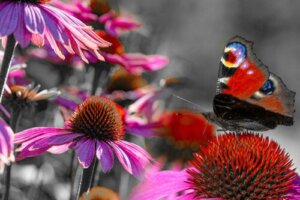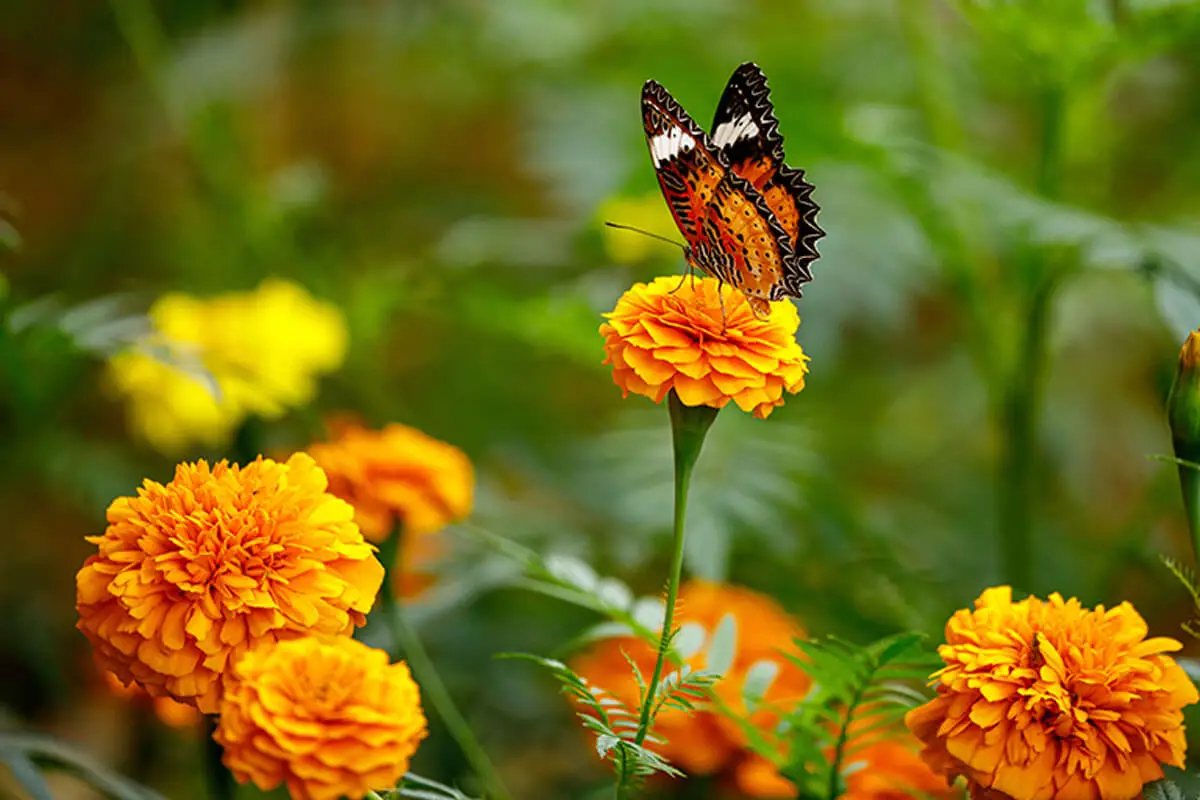Plants, Care, and Tips to Start a Butterfly Garden at Home

Why would anyone want to have a butterfly garden? Because it is an ecosystem for these and other types of pollinators, so the planet will thank you.
The key is in those plants that produce enough nectar and in the implementation of some tricks to make your garden interesting for these insects. Read on to learn more!
So you can have a nice butterfly garden at home!
To have that butterfly garden you have always dreamed of you have to follow a few simple but necessary steps. They range from the study of native butterfly species to the choice of plants and the place where you should put them. Here, we tell you all the details.
1. Identify the native species of butterflies
Each country, even each city or town, has special and different characteristics. Likewise, and depending on these conditions, there are species that are native to certain areas and you should identify them.
This research can be done with online information, searching in libraries or visiting a butterfly farm, if you are fortunate enough to live near one. You can also find data on the floral species that these endemic butterflies prefer and start that selection based on the data.
2. Opt for plants that have a lot of nectar

The basis of butterflies’ food is the nectar they take from flowers in gardens and green spaces still on the planet. Although they like nectar in general, there are some species of flora that they enjoy more than others, so you have to bet on those.
Among their preferences are also brightly colored flowers. Some of the plants that butterflies like the most are the following:
- Echinacea purpurea: native to North America and an ingredient in commercial medicines, with large, brightly colored flowers in pink and purple. It has yellow central tubulars.
- Cottonweed: it is a plant that can grow up to one meter high and with flowers that emerge at the top in clusters of 10 to 20 flowers. They vary between yellow and orange colors.
- Butterfly weed: it is an herb that looks a lot like clover, but has purple leaves that are very striking. When the sun goes down, its leaves close and, in fact, from a distance they look like butterfly wings.
- Calendula: it is a plant that blooms orange and is even used for human consumption in infusion.
- Cosmos: also known as summer flower, it can grow between half a meter and one and a half meters high. Its flowers are born at the tip of their stems, with colors like hot pink, which makes them very striking.
As you can intuit so far, it seems that the butterflies’ favorite colors are purple, pink, orange and yellow. In addition, there is something common in the plants described and that is that they have a fragrance that also attracts.
2. You have to vary the heights and shapes of the plants
When choosing the plants for your butterfly garden you also have to think about them having different heights and shapes in their leaves and flowers. This way, butterflies will be more likely to be interested and want to look for food and shelter there.
Precisely for this you should leave, as far as possible, an area where grass and other wild plants grow naturally. This foliage is called undergrowth and naturally complements the plants you are going to plant.
4. Choose a spot in the garden that receives a minimum of six hours of sun
The sun will make the species you chose to create your butterfly garden grow better and shine brightly, making them more attractive to pollinators. So make sure that the space you choose has a minimum of six hours of sun and six hours of shade per day.
The other important reason to ensure this is that butterflies are cold-blooded. Therefore, they require resting in a warm space.

5. Create protection for butterflies
Butterflies will not come to your garden if there are strong winds that move the plants. They need stability while feeding; otherwise, they spend a lot of energy to stand their ground.
You can consider putting the garden next to a wall or building a wooden fence.
6. Add rocks for butterflies to rest on
On flowers, butterflies go to feed and lay their eggs. Although they also rest on them, you can complement the garden with some large, flat-edged rocks so they have a space to rest and warm themselves.
Therefore, it is important that you place the rocks where they will receive six hours of direct sunlight. Especially if this sun time is in the afternoon.
7. Water is very important
Butterflies need water to drink, so it is convenient to create a space where the soil is always moist, as they absorb water this way. They prefer this method and not a fountain.
Make a small hole in the ground and keep it moist. Water it every time it dries out. If you don’t have enough space, then place some sand with water in a saucer.
8. Leave extra food in the butterfly garden
In addition to flowers, you can leave them pieces of fruit, such as pineapple and oranges. Place a tray where they are displayed for their enjoyment.
Another option is to place a feeder with nectar. It is an implement that you can buy in a specialized store.
You can also make food for the butterflies with water and sugar. You put a part of each, let the mixture boil and, when it is cold, offer it in the feeder.
Your butterfly garden is ready!
Having a butterfly garden at home is not as difficult as you might imagine. All you have to do is choose the flowers they like, plant them in a strategic area, and think about protecting and feeding them.
If you follow the advice given above, you will soon see how your garden will be full of these insects and other pollinators. You are sure to be visited by bees and hummingbirds as well.
All cited sources were thoroughly reviewed by our team to ensure their quality, reliability, currency, and validity. The bibliography of this article was considered reliable and of academic or scientific accuracy.
- Ciccale Smit, M. (2022). Jardines de mariposas educativos: guía básica para armar espacios biodiversos en CABA.
This text is provided for informational purposes only and does not replace consultation with a professional. If in doubt, consult your specialist.








